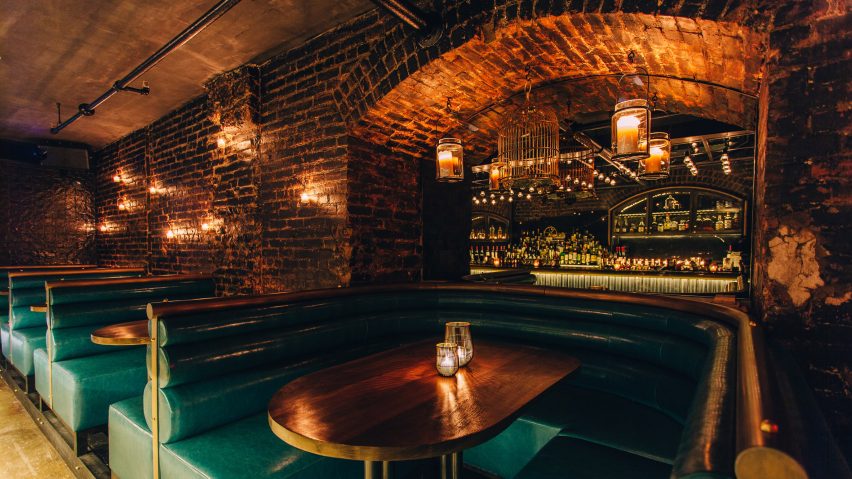A light-toned coffee and pastry shop in Manhattan's NoMad district provides a front for a secret subterranean bar behind, both with interiors by Carpenter + Mason.
Patent Coffee and Patent Pending occupy the cellar of the Radiowave Building, where inventor Nikola Tesla once lived and worked, in the area named for its location north of Madison Square Park.
Opened earlier this year by Ryan McKenzie, a founding partner of hospitality-focused creative agency Simmer, the concept has two identities that allow it to operate both during the day and after dark.
The space is divided into two, with the coffee shop located at the front and open during daylight hours. Only when evening comes does the hidden speakeasy behind come into use.
"After 5pm, the doors lock and things get a bit more surreptitious," said a statement from Patent. "To access the 34-seat cocktail cave, patrons buzz in at street level, traverse through the candle-lit coffee shop and slip through a concealed door."
To design the pair of distinctly different spaces, Simmer collaborated with Carpenter + Mason – the Brooklyn-based studio behind the interior of the recently opened Tonchin restaurant not far away.
In the cafe, white walls and light-toned wood contrast exposed red brick and black mosaic tiles. Colourful marble chosen for the countertop is also used as frames for floral decorations on the walls.
Behind the inconspicuous folding door, the "cocktail cave" is much more cellar-like in appearance. The brickwork is painted black, along with the majority of other surfaces.
The long, narrow space has the bar along one side, and booth seating upholstered in teal-coloured leather down the other.
Arched niches in the walls are fitted with mirrors to give a greater sense of depth to the space, while cage-like cabinets are slotted into the alcoves behind the bar to store and display liquor bottles.
An installation of metallic-coated light bulbs above the counter nods to Tesla and his work with electricity, as does the cocktail menu.
The dimly lit space also features candles hung from the walls, and placed along the bar. The entrances to bathrooms at the back are surrounded by wallpaper patterned with giant floral prints, while fresh greenery is sourced from the nearby flower district.
Speakeasies gained popularity in the US during the prohibition era around the 1920s, when the sale of alcohol was illegal across the country.
Although this ended in 1933, the type of hidden bar remained in use and became popular around the world. Examples in Hong Kong include an establishment hidden behind an umbrella shop, a bar disguised as a stamp shop and a cocktail lounge tucked behind a grocery stall.

